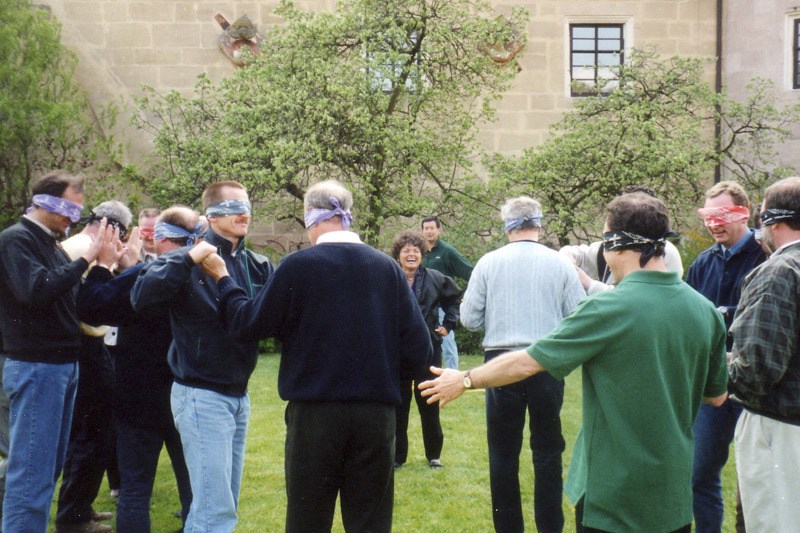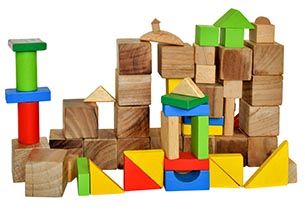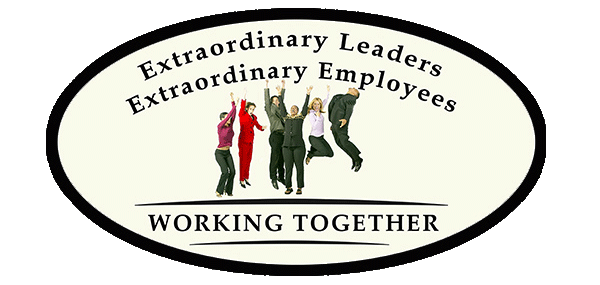Sure It WAs fun, but what was the point?
Debriefing Experiential Activities to Ensure Transfer to the Real World!

There are hundreds of books out there to help trainers and leaders develop simulations, games, and activities for their team meetings, workshops, and events. But all too often, participants leave the experience saying, “Well, we had a good time, but I’m not sure it was worth my time to be here” or worse yet, “Sure it was fun, but what was the point?”
What separates the master facilitators from other trainers and leaders when using games and activities is the DEBRIEFING—making sure participants understand how the activity relates to “the real world.” Here are a few tips to help you debrief effectively.
KNOW YOUR GOAL

This sounds so obvious, and yet, too often I see trainers and leaders use an activity because it is fun — with no idea why they’re using it. The goal is to use an activity to illustrate a key point you are making in your session. As you select an activity, spend some time answering these questions:
- “What will the participants get from this activity?
- How, specifically, does this activity illustrate the point?
- How does it relate to the “real world” in terms of metaphors and actions?
DEVELOP SPECIFIC DEBRIEFING QUESTIONS

Following the activity, have a few questions listed on a flip chart or slide, or on handouts to be distributed. The questions should stimulate discussion around the purpose of the activity and how participants can transfer the learnings to their actual work environment. The questions will vary depending on the activity, but here are a few examples:
- What specific strategies did team members use to handle conflict?
- What worked most effectively to move the team through the impasse?
- When things got stressful, how did the behavior of team members change?
- What impact did the changes in behavior have on the rest of the team?
LET PARTICIPANTS “LEAD THE DANCE” (AS MUCH AS POSSIBLE)

It is important that you already have your own ideas in terms of answers to the questions you present to the group. However, the impact is far greater if the participants themselves come up with the learnings. (CSP, CPAE Bob Pike has a fabulous quote: “People rarely argue with their own data!”)
Your role is to facilitate the discussion, and gently lead them to their own discoveries. You can either let the teams break out and discuss the debriefing questions themselves, or lead a general group discussion. The larger the group, the more valuable a small group breakout discussion will be.
EXAMPLES ARE WORTH A THOUSAND WORDS

Encouraging team members to give specific examples to illustrate their learnings and how to apply the learnings back on the job forces them to go deeper than just a surface understanding of the activity. "Connecting the dots" with specific examples reinforces the depth of practical application of your material, and makes it come alive!
LET ACTIVITIES BUILD ON ONE ANOTHER—AND REFER BACK TO THEM OFTEN

To build continuity into your session, you want to refer back to earlier activities to demonstrate how they are connected. For example, in a 2-day team building session I often use a Blind Trust Walk early in the first day. It becomes a metaphor throughout the rest of the session. I might say, “Remember when Tom shared his need for control during the trust walk? Well, Tom, what impact did the knowledge of this control need have on how you acted during the negotiations of this last activity?”—OR—“You told me during the Blind Trust Walk that more specific communication and attention to details made things much easier. How well did you use that learning on this last activity?”
The Bottom line -- why is debriefing important?
Adult learning theory supports the fact that adults learn most effectively when they can be actively involved in the process*—and games, simulations and activities are excellent opportunities to get this involvement. But if it doesn’t relate, you have made things worse than having no involvement at all. Adults MUST see the relationship of what they are doing to the real world; otherwise (no matter how much fun they seem to be having), the evaluations will show they feel it was a waste of time. And above all else—do not just assume they will “get it.” Make the time to debrief every activity you include. The results will be phenomenal!
* Knowles, Malcolm, Elwood Holton III, and Richard Swanson, The Adult Learner, Burlington, MA: Butterworth-Heinemann, 2011.
